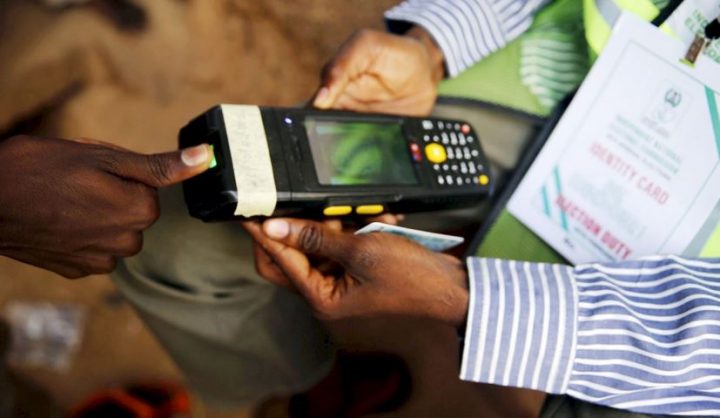An election is a complex, multi-faceted event happening on a given date and subject to precise laws and regulations. The entire process is organised by an electoral management body (EMB). Each country structures and names EMBs in a variety of ways, but their responsibilities are similar. To fulfil their roles and mandates, an EMB needs staff, equipment and funding.
Vote rigging is one dimension of election irregularities. In its narrower aspects, vote rigging points to irregularities in the polling, counting, tallying and announcement of election results. Generally it includes fraud by multiple voting, voting by underage persons, adding ballots marked by persons who are not voting legally, interference with boxes, exclusion of valid ballots by counting officials, denying marginalised voters the right to vote, falsification of results sheet or deliberate fraud in tabulating results. Intimidation, attacks on voters, intimidation of candidates, false closure of or information about polling centers etc., is not covered.
The use of information and communication technologies (ICTs) in elections is receiving increased attention. On the one hand, information technologies are perceived as solutions for many electoral hurdles, such as the creation of an accurate voter register, simplified voting and result tallying, faster transmission of election results, etc. On the other hand, the practice has proven that the introduction of ICTs comes with some risks, such as malfunctioning of equipment, the contested integrity of machines, or exposure to hacking.
There is, however, another aspect of the application of digital technologies in elections which, although important for successful elections, does not attract as much spotlight. Namely, the power of ICTs to store, compute, and visualise vast amounts of data is becoming increasingly critical in providing electoral management bodies with the situational awareness needed for effective management of electoral risks.
Regardless of where elections take place, election management bodies (EMBs) face numerous risks in organising them. These relate to political, legal, technical, operational, and security challenges associated with providing level playing fields for political actors, respecting strict timelines, introduction of ICTs, ensuring safety of participants and credibility of results, amongst other things. When risks materialise, the consequences may be serious and neither well-established nor transitional democracies are immune to it. There are many instances in which electoral events have triggered deep political crises, tensions, and violence.
Prevention and mitigation of electoral risks are challenging tasks and electoral management bodies are increasingly embracing and institutionalising risk management practices. One important aspect of this is the building of internal capacity to systematically measure and analyse multiple risks throughout the entire electoral cycle. However, because of the complex nature of electoral processes – multiplicity of actors, number and scope of events undertaken, etc. – this is easier said than done. The amount of information that electoral management bodies generate and receive from their regional and field staff, other government agencies, political subjects, civil society organisations citizens is often hard to comprehend.
EMB responsibilities include:
-
securing and providing electoral equipment
-
the design, procurement, purchase, storage, distribution and eventual recollection of voting materials
-
the recruitment, administration, training and deployment of personnel to the voting places
-
counting, tabulating and reporting votes recorded on ballot papers or voting machines and providing information to voters
Depending on the electoral system and applicable legislation, an EMB might organise and plan the voters’ registration as well as the registration of political parties and candidate.
Several technologies are available to assist EMBs, including telecommunications technology, computer hardware and computer software, among others.
Telecommunications technology refers to telephone, radio, television, wireless and satellite communications as well as computer networks and the Internet.
Computer hardware and software include computing devices, open source and proprietary office automation aids such as word processing, spreadsheets, databases and multi-purpose programming tools. Open source is software that can be freely obtained or downloaded and involves minimal or no annual maintenance costs. There may be, however, development and management costs. Proprietary software often requires an initial acquisition fee, correlated to usage and an annual maintenance fee.
Other groups of technologies include devices such as counting machines, mail sorters, printers, projectors and screens.
Technologies for specific electoral tasks, such as boundary delimitation, voter registration, regulation of party and candidates, reaching voters, voting operations and corporate management are considered separately in this topic area.
The discussed technologies include among others, electronic and mechanical voting systems, scanning systems, identification systems, the Internet and office automation.
Electronic and mechanical voting systems
There are different types of electronic and mechanical voting systems. Some use technologies developed specifically for electoral purposes. Mechanical voting machines were used widely in the United States, and to a lesser extent in a small number of other countries around the world, but are being replaced by electronic voting machines. Different electoral electronic devices are already in use in several countries and their use is expected to increase.
The main types of electronic voting systems include:
-
punch card voting/tabulation systems
-
machine readable (optical scanning) voting/tabulation systems
-
direct recording electronic systems
Scanning
Electronic scanning systems are used to convert data marked manually on paper into electronic form. While scanning is often used to capture voting data written into machine-readable ballots, it can also be used to capture other data, such as lists of electors who have voted or information shown on forms.
There are four main types of optical scanning technologies:
-
optical mark reading (OMR)
-
optical character recognition (OCR)
-
intelligent character recognition (ICR)
-
imaging technology
Identification systems
Several stages in the election process need to reliably identify a person: when a person votes, when a person registers to vote or when an employee needs access to a restricted place.
Some countries rely on the voter’s self identification, without the need of an electoral identification document. Other countries may require specific electoral identification system.
As electronic voting becomes more widespread and more automated, particularly where voting is introduced on the Internet or by telephone, these identification systems become crucial to ensure that only eligible voters are able to vote.
There are different types of identification systems:
-
identity cards
-
personal identity numbers (PINs)
-
bio-identification systems (including voice, hand, finger/thumb, retinal identification systems)
-
digitised photography
-
bar coding
-
public key infrastructure/electronic signatures
-
passwords
The Internet
The Internet—a worldwide information network linking computers, accessible to the public with the appropriate technology —can be used for electoral purposes in a variety of ways. Some of the electoral applications of the Internet include:
-
in-house intranets
-
email
-
procurement
-
publishing information for voters, candidates, the media and other clients
-
voter registration
-
campaign finance reporting and disclosure
-
election results publishing
-
electronic voting
Office automation
Personal computer-based office automation software has become an indispensable part of election management in many countries. Word processing programs have replaced typewriters; spreadsheet programs have replaced ledger books; database programs have replaced paper-based electoral rolls, inventories and staff lists; and personal organiser programs have replaced paper diaries.
Word processing and spreadsheet programs developed in the 1970s are cumbersome in comparison to the sophisticated office automation programs currently available. These programs have empowered ordinary office workers by enabling them to complete tasks in-house that were once completed off-site.
For example, desktop publishing programs allow relative novices to produce professional-quality publications, instead of using professional typesetters and printers. Database and spreadsheet programs running on high-powered personal computers allow ordinary users to input, store and use data in ways that once would only have been possible on large main-frame computers operated by programmers.
Specialised electronic/mechanical devices
In addition to standard computers and electronic voting devices, there is a wide range of specialised electronic/mechanical devices that can be used for electoral purposes:
-
counting machines
-
letter openers
-
mail inserting machines
-
label printers
-
overhead projectors
-
televisions/videos
-
electronic whiteboards
-
date stampers
-
automatic numbering machines
Non-electronic Innovations
Some uses of technology for election purposes are not electronic or mechanical, but involve the innovative use of manufactured materials such as:
-
plastics for ballot boxes, voting compartments and security seals
-
cardboard for ballot boxes, voting compartments and polling place furniture
-
tamper evident materials
-
dyes and inks to prevent multiple voting




